Peoria Audubon Society is a local affiliate of both:
National Audubon Society & Illinois Audubon Society

Brimfield Railroad Prairie:
Prescribed Burn by Jubilee Prairie Dawgs
Photo Gallery:
Prairie Burn: Saturday Nov. 5, 2011
Doug Franks and several members of the Jubilee Prairie Dawgs, which are an informal local group dedicated to preserving and restoring native Illinois prairie, are the volunteer stewards of the Brimfield Railroad Prairie Nature Preserve. In November 2011, to promote sustainable growth of a healthy native prairie, the Prairie Dawgs burned the southern half of the 1/2 mile long 6-acre parcel.
Dennis Endicott of Peoria Audubon was there to learn how a prescribed burn of a prairie is conducted and to take photos of the process to share. Note that the Brimfield Railroad Prairie Nature Preserve is owned by the Peoria Audubon Society.
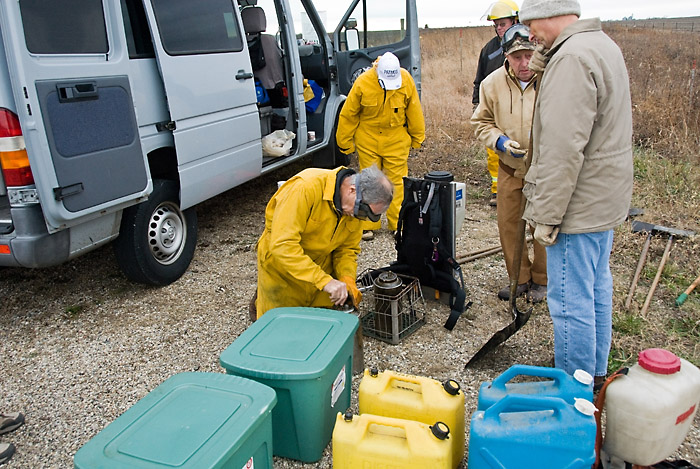
Doug Franks and the Jubilee Prairie Dawgs Prepare and Set Up Gear
In the photo above, the Prairie Dawgs are setting up their gear, supplies, and safety equipment for the controlled prescribed burn. Shovels and flappers were provided to stop the fire line if needed. And, water carried on backpacks with hand pumps are also used to help establish a prescribed fire line.
According to Doug, a prairie can be burned in either late fall or early spring. The choice and selection of dates is dependent on a number of factors. Safety and control of the burn are essential factors. On the date of this burn, although the wind was fairly strong, the humidity and moisture in the ground were very favorable as a condition that enhances safety.
Additionally, the ground bordering the two dominant long sides of the narrow 1/2 mile long plot were tilled following harvest. This created a natural barrier for control of the burn area.
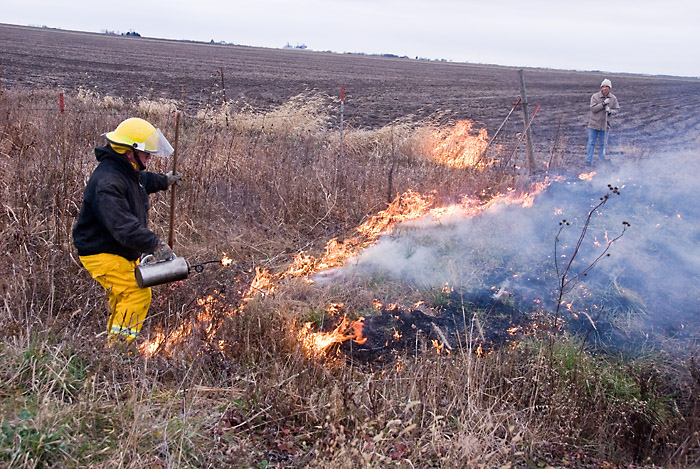
Jim Alwill Sets Fire Border at South Property Line
In the above image, Jim Alwill is setting up a clear border for the prescribed burn on the south end of the plot. Jim is using a driptorch to "lay down" a line of fire. The drip torch, a tool used in wildfire suppression was fueled by a mixture of 80% diesel and 20% old gasoline.
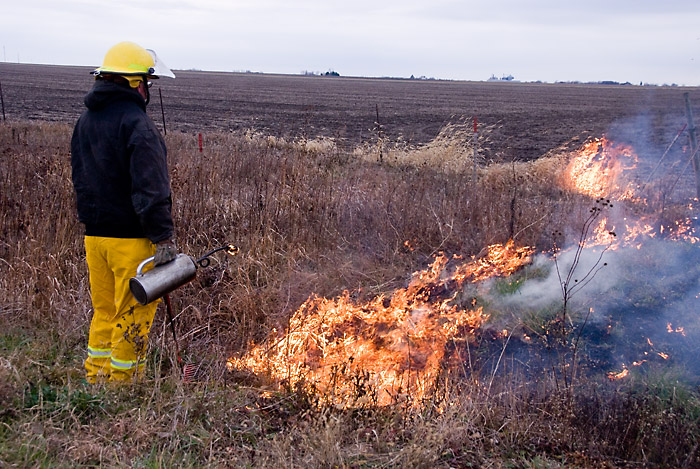
Jim Monitors South Border and Potential Wind Effects
With the wind blowing from the south to the north (left to right in the above image), having a back burned border helps prevent the potential of embers "jumping" over the over and beyond the border of the prescribed burn.
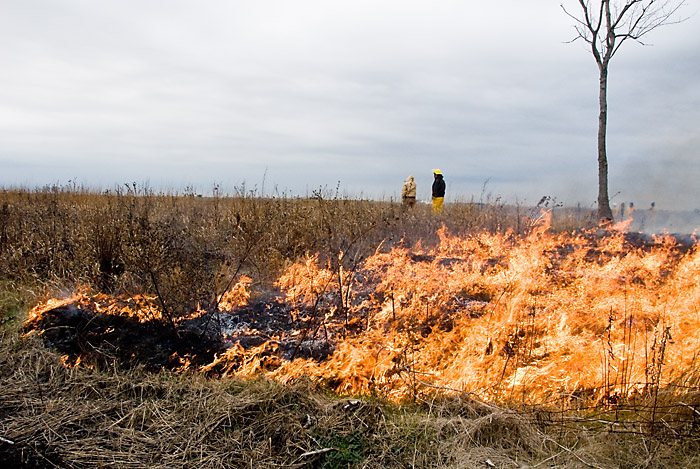
Prairie Burn on South End
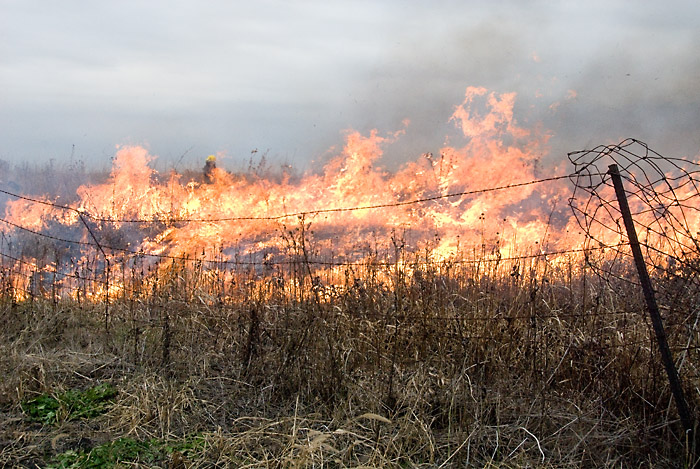
Prairie Burn Progresses
After the border was back burned, the area of the fire and intensity of the local burn can be increased.
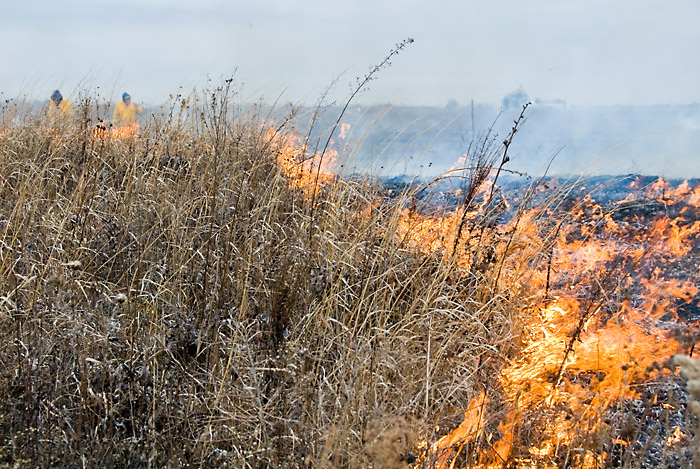
Prairie Burn Progresses
In the above image, a back burned border was established to define a line against the adjoining field. The prescribed burn was then allowed to progress toward the middle of the prairie.
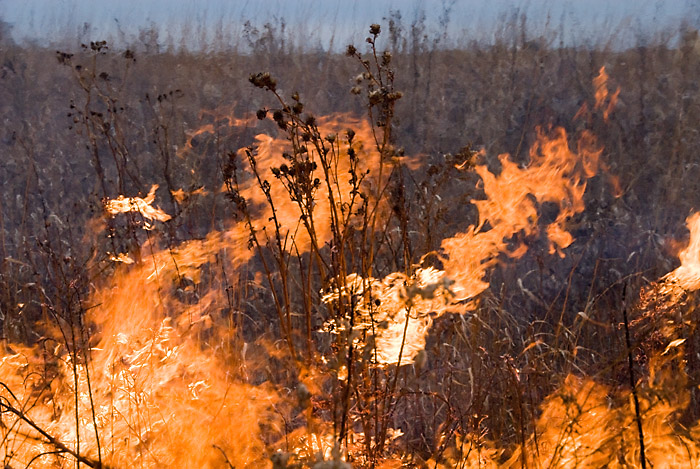
Closeup of Flames Igniting Dry Tinder
A telephoto closeup of the flames shows how the dried prairie plants can burst into flames from the increased temperature of the burning underneath.
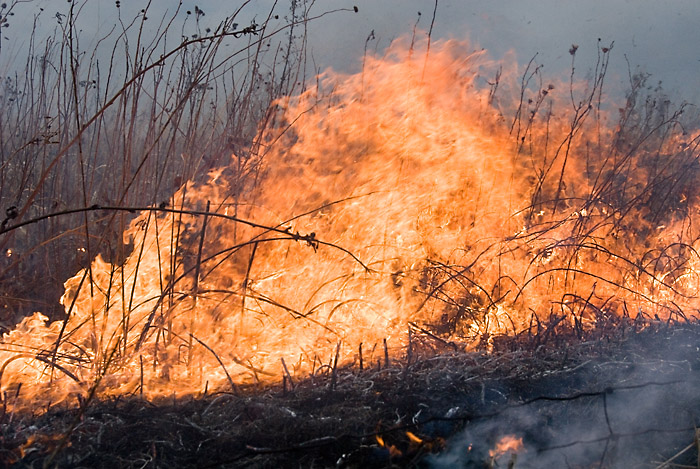
Controlled Prairie Burn at Peak Intensity
Although the intensity of the flames can be great at a location along the border, the intensity quickly dies down as the tinder is consumed.
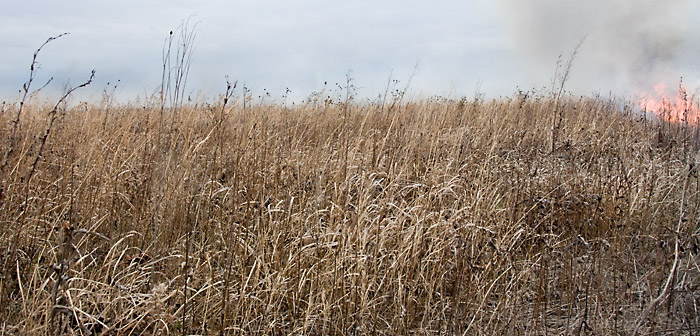
Prairie Not Yet Burned
The progress of the burn is carefully controlled to keep it manageable.
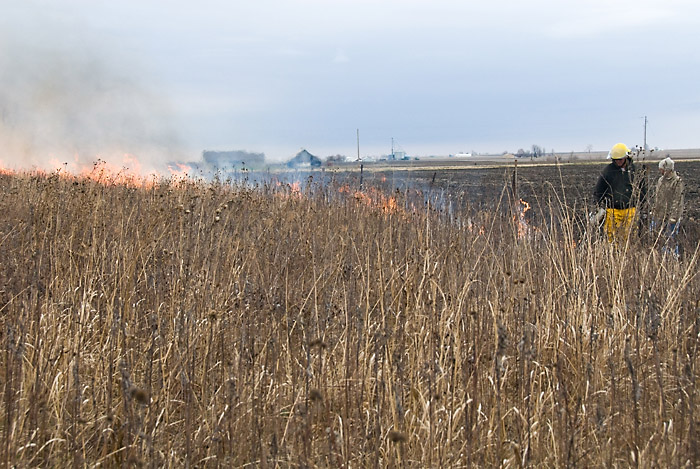
Jim Establishes an East Boarder for Prairie Burn
In the above image, Jim is using the driptorch to define the eastern border of the prescribed burn. This border runs along the edge of the prairie property and defines it against the adjoining farm field.
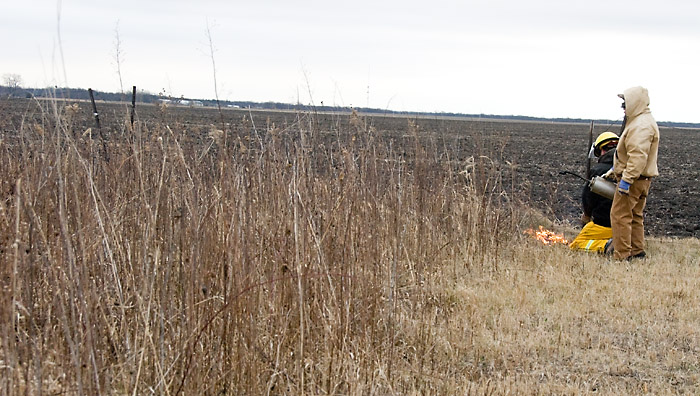
Starting Back Burn on North End of Prairie Half-way Area
For the prescribed burn, only the north half of the 1/2 mile long plot is burned. The south half will be burned next year. The Prairie Dawgs indicated that it is essential to allow a population of beneficial insects to survive the process. Many of the native prairie plants are dependent on beneficial insects to provide pollination and to promote a proliferation of the prairie.
Note that with the wind blowing from the north to the the south, the border of the north end of the prescribed burn was established after the southern border.
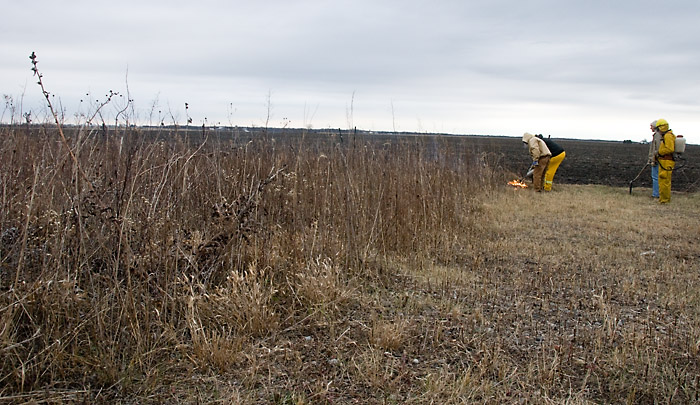
At North End of Prairie Half-way Area
After setting a fire in one southern spot, a driptorch is used to establish the southern border of the prescribed burn.
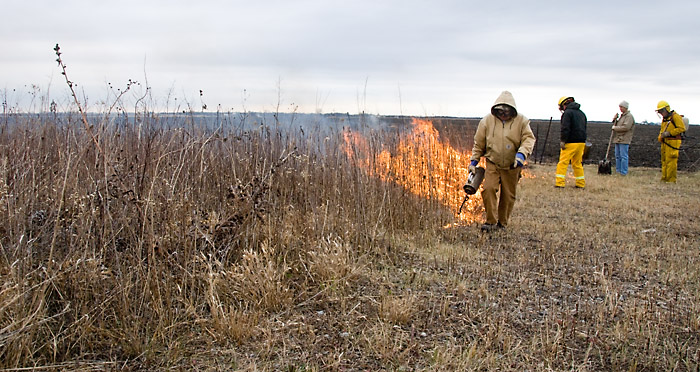
Setting North Border for Prairie Burn (looking east)
Note how a driptorch is used to "lay down" the border of the burn. Also, the wind is fanning the flames from the right to the left in the above image. Doug Franks carefully monitors the progress while wearing a water sprayer backpack, at the ready in case of need. Additionally, John is monitoring the burn progress with a shovel to help define the border if needed.
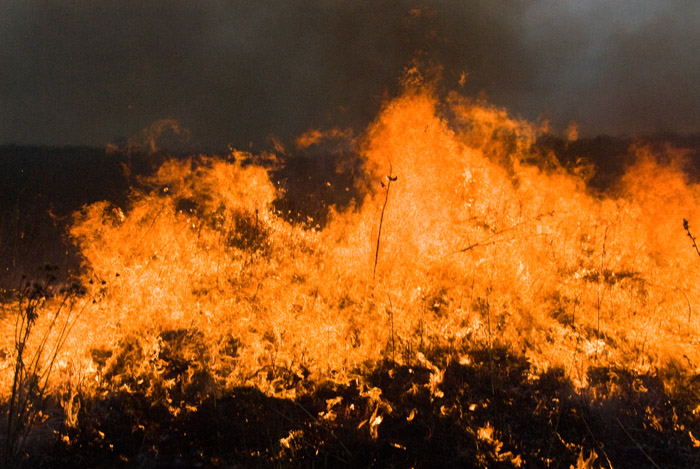
Prairie Burn at Peak Intensity
In some locations, within the established back burn boundaries, the flames can momentarily grow in intensity.
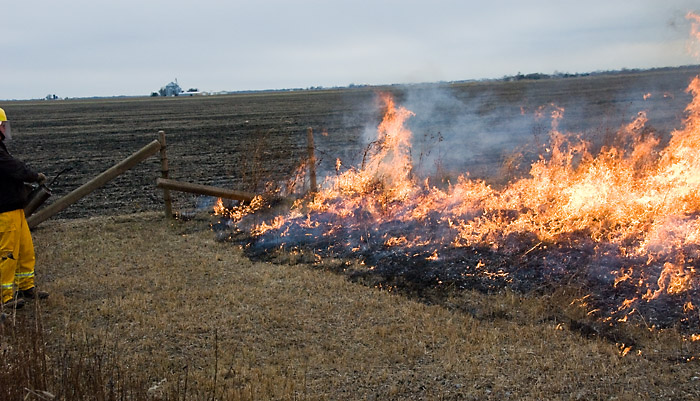
Monitoring Clean North Border of Burn (looking west)
In the above image, one can see the clearly established border of the burn.
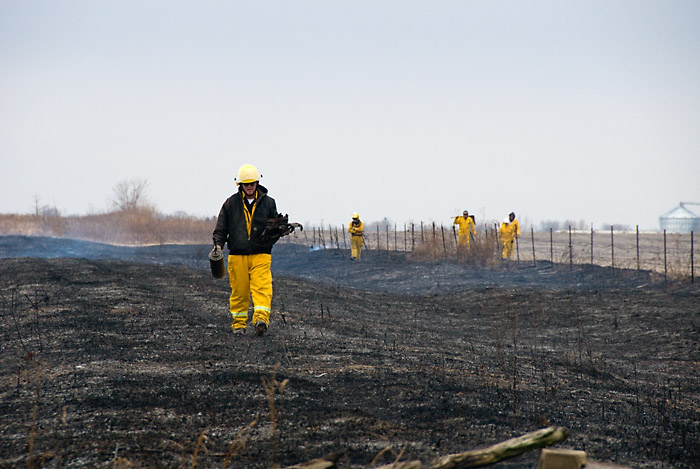
Jim Walking Length of Prairie Burn
Finishing up the prescribed burn, Jim walks down the length of the prairie and picks up a few woody branches that did not fully burn. He then piles them up allowing them to burn up. The walk also provides an opportunity to verify that the burn is finished
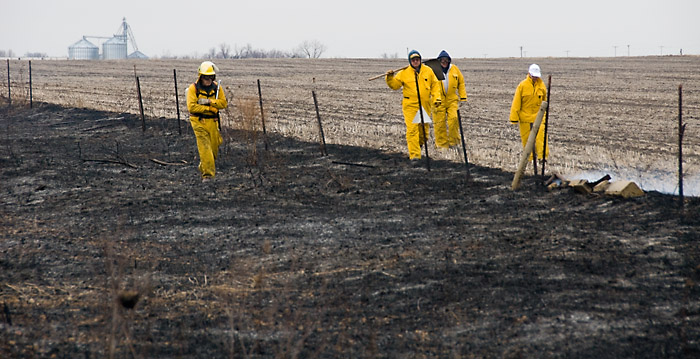
Jubilee Prairie Dawgs Monitor Remaining Smolders from Successful Controlled Prairie Burn
After the prescribed burn is finished, the Prairie Dawgs walk the length of the burn, with tools in the ready, to assure the burn is over and in control.
The Peoria Audubon Society appreciates the work and dedication of the Jubilee Prairie Dawgs as they volunteer their time and stewardship toward promoting native Illinois prairie.
Photos courtesy of Dennis Endicott - All rights reserved